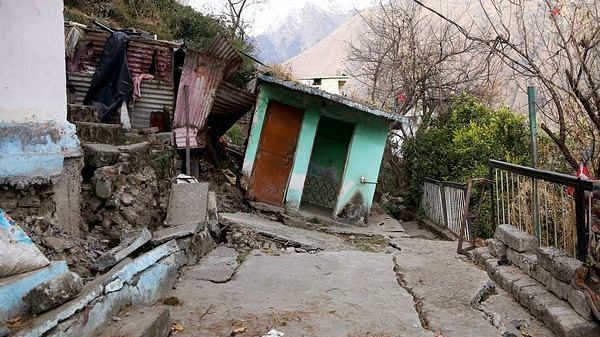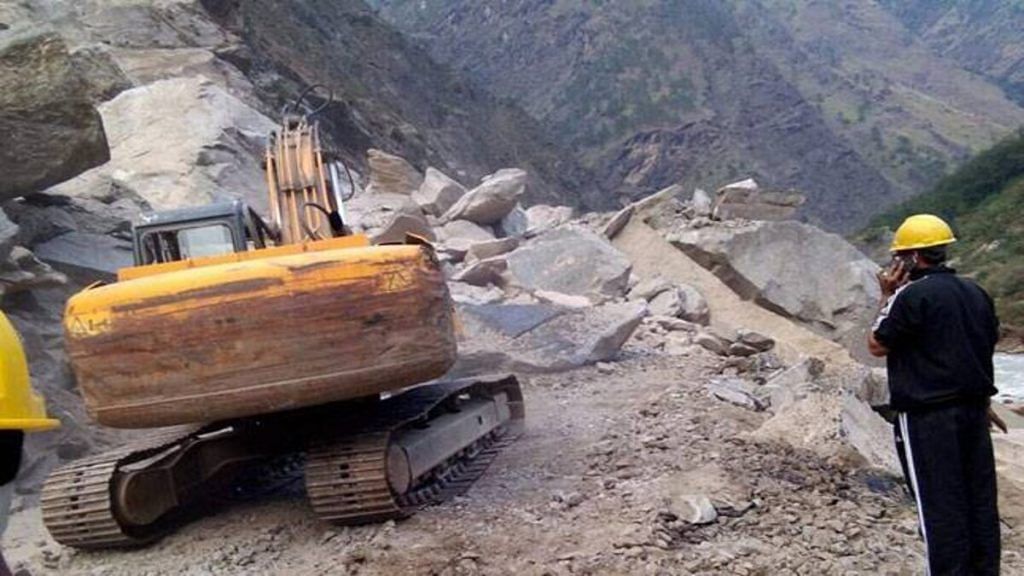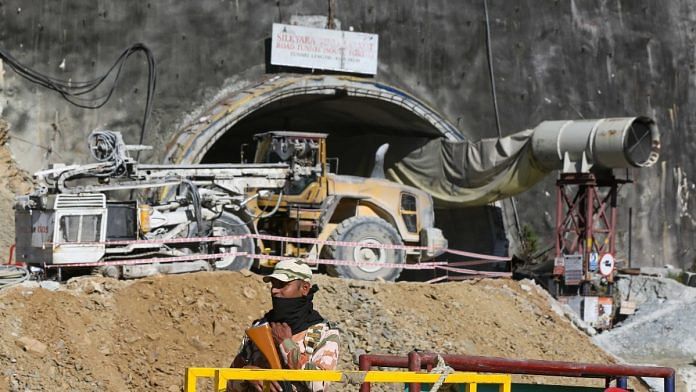Diwali festivities were about to begin last Sunday when news trickled in that an under-construction tunnel on Uttarakhand’s Yamunotri National Highway — part of the Modi government’s ambitious over-Rs 12,000-crore Char Dham project — had collapsed, trapping 40 labourers.
The 4.5 km tunnel, due for completion in February 2024, would have connected Silkyara and Dandalgaon in Uttarakhand’s Uttarkashi district. Several agencies have been working non-stop for six days to extricate the labourers, using sophisticated drilling machines sent from Delhi. Oxygen, food, and essential medicines are being supplied to the trapped men through a six-inch pipe.
As the frantic rescue operations continue, the crisis sharpens focus on long-standing and long-ignored environmental and safety warnings about the Char Dham project. And that is why it is ThePrint’s Newsmaker of the Week.
The Char Dham road project, whose foundation stone was laid by Prime Minister Narendra Modi in 2016, aims to improve connectivity to the Hindu pilgrimage sites of Yamunotri, Gangotri, Kedarnath, and Badrinath.
But from day one, the project has faced severe backlash from environmentalists, who allege that environment-impact assessments were not done before starting construction in this ecologically sensitive region. Further, it has been alleged that the highway project has been divided into several parts as a tactic to sidestep environmental clearances.
Activists have accused the central government of denuding and degrading the fragile Himalayan range through extensive hill cutting and construction in the name of road infrastructure and connectivity.
They have also attributed the recent spate of disasters in the region— including the 2021 Chamoli flash floods, the 2023 land subsidence in Joshimath, and the increasing number of landslides— to the project’s massive hill cutting, although no official link has been established.
As part of the Char Dham project, 889 km of the existing single-lane highway will be widened by 10 metres, turning it into a two-lane road for enhanced all-weather connectivity to the four pilgrimage towns in Uttarakhand. A stretch of the Kailash Mansarovar pilgrimage route will also be developed as part of the project.
Also Read: Activists blame NTPC’s Tapovan power plant & govt’s Char Dham project for Joshimath sinking
Spate of disasters
The 12 November tunnel collapse is the latest among a series of disasters to strike Uttarakhand, located in the ecologically fragile Himalayan region. Unbridled tourism, exceeding the region’s carrying capacity, coupled with unchecked infrastructure construction and climate change have created a recipe for natural and human-made disasters.
In 2013, flash floods triggered by cloudbursts in Uttarakhand claimed more than 6,000 lives and caused massive damage to infrastructure and property, including in and around the Kedarnath shrine. It has been described as the worst natural disaster since the 2004 tsunami.
Then, in February 2021, a portion of the Nanda Devi glacier broke off, resulting in an avalanche and subsequent flash floods that ravaged Uttarakhand’s Chamoli district. This event severely damaged the Rishi Ganga and the Tapovan-Vishnugad hydel power plants of the National Thermal Power Corporation (NTPC), with widespread destruction reported downstream, including over 200 casualties.

Early this year, land subsidence in the pilgrimage town of Joshimath resulted in massive cracks appearing in houses and civil structures, necessitating the evacuation and relocation of many residents.
Land subsidence is a geological phenomenon that results in gradual settling or sudden sinking of the Earth’s surface due to displacement of subsurface earth materials— the removal and blasting of rocks for construction have been cited as a major contributing factor in the case of Joshimath
Environment vs development
The environment-versus-development debate is never-ending in developing economies. But the string of recent disasters in Uttarakhand, according to environmentalists, should serve as an urgent warning. They stress that unchecked construction and turning a blind eye to environmental and climate considerations will have consequences. And knee-jerk reactions are not going to help.
Since its conceptualisation, the Char Dham project has been mired in controversy. Despite strong opposition from environmentalists, the Union road transport and highways ministry, led by Nitin Gadkari, proceeded with the project.
The Char Dham project was first taken to the National Green Tribunal in February 2018 by the Dehradun-based NGO Citizens for Green Doon. The NGO alleged that over 25,000 trees were felled for the project in violation of the Forest Conservation Act 1970. In its petition it also said that the highways ministry did not get an environment impact assessment (EIA) done for the project. The NGO also challenged the construction of the Char Dham project on the ground that its development would have a negative impact on the Himalayan ecosystem.
The highways ministry, however, found a way to go ahead with the project. It cited a 2013 notification of the environment ministry, which exempted highway expansion projects of up to 100 km in length or 40 metres in width from EIA. The ministry said that it had segmented the 889 km stretch into 53 individual packages, none of which exceeded the specified length and width limits.
In September 2018, the NGT gave its go-ahead to the road construction on the grounds that work on a project of significant public interest cannot be stopped if appropriate safeguards are in place. The order was challenged by the NGO in the Supreme Court, which also gave the green signal for widening three stretches of the road in December 2021, with an eye to improve India’s defence preparedness vis-a-vis China.
Also Read: Hindi TV news has no time for the Uttarakhand tunnel collapse. Gaza & Ayodhya rule the air
Warnings from govt-appointed committees
Over the past four decades, several government-appointed committees have recommended restrictions on heavy construction in the Joshimath area, including limitations on blasting and digging to remove boulders for road projects. However, such recommendations have gone unheeded by successive governments.
As early as 1976, a report from the government-appointed MC Mishra committee highlighted the adverse impact of heavy construction in Joshimath after 1962. This work included indiscriminate felling of trees for building roads and civic structures, destroying the region’s natural forest cover.
The report warned of potential land subsidence if preventive measures weren’t taken and recommended imposing restrictions on heavy construction.

The Supreme Court also appointed a high-powered committee to review the feasibility of the Char Dham road project when it was being implemented. This committee contended that widening the road would be dangerous for the landslide-prone Himalayan terrain.
The Union road transport and highways ministry had originally planned to expand a 816 km stretch of the Char Dham road to 10 metres. Of this, the ministry has already completed construction on a 365 km stretch. Hill cutting has been completed for constructing a 10 metre road on another 537 km stretch.
In its response to the Supreme Court, the ministry argued that reducing the width would pose serious road safety hazards. The defence ministry had also cited serious repercussions on national defence and security interests if the road width was reduced from 10 metres.
Following this, the Supreme Court gave its go-ahead to widening three stretches of the project. However, work has been put on hold since January following the land subsidence incident.
Now, the collapse of the Yamunotri tunnel is yet another signal that it’s time for the state and central governments to finally pay attention to the alarm bells that have been ringing for so long.
(Edited by Asavari Singh)



